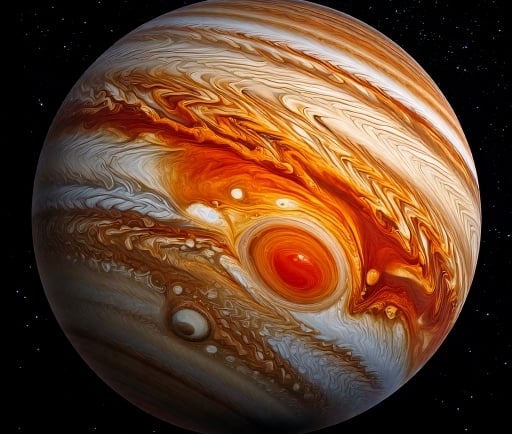Magnifying The Great Red Spot: Jupiter's High Pressure Region


Introduction to the Great Red Spot
The Great Red Spot is one of the most astonishing features in our solar system, located on the gas giant Jupiter. This colossal storm, which has persisted for over 350 years, serves as a high-pressure region and is known for its striking reddish hue. Its immense size, which can envelop two or more Earths, makes it a significant area of study for both amateur and professional astronomers. This blog post delves into the characteristics of the Great Red Spot, its formation, and its importance in understanding atmospheric phenomena.
The Formation of the Great Red Spot
Initially discovered in the 17th century, the Great Red Spot is believed to be an anticyclonic storm, a type of weather pattern characterized by the rotation of air masses around a central region of high atmospheric pressure. The storm’s longevity can be attributed to Jupiter's rapid rotation and its unique atmospheric composition, which features a complex mixture of hydrogen, helium, and trace amounts of other gases. As the winds circulate at incredible speeds, reaching more than 400 kilometers per hour, they contribute to the stability of the storm, creating a persistent high pressure that fuels its existence.
Significance of the Great Red Spot in Solar System Studies
The Great Red Spot not only captures the imaginations of sky watchers but also plays a crucial role in the study of planetary atmospheres. By examining the storm's dynamics and the changes it undergoes, researchers can glean insights into the processes governing weather patterns on other planets. The Great Red Spot offers a natural laboratory for testing atmospheric theories, and studying its variations aids in understanding the implications of climate change on Earth and beyond. As it continues to shrink and evolve, scientists are keenly observing its trajectory, hoping to unravel the secrets behind its remarkable endurance and transformation over centuries.
In conclusion, the Great Red Spot is not merely a visual marvel; it is a high-pressure region that embodies the complexities of Jupiter's atmosphere. The study of this extraordinary storm aids in our broader understanding of planetary behavior, further enriching our knowledge of the solar system. As space exploration continues to advance, the Great Red Spot remains a focal point, inspiring future generations to explore the mysteries of the universe.
